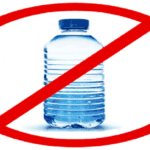
guest post by Marinella Yule of My Open Passport
I love how in today’s society, the majority of people are making efforts to become more environmentally friendly. There are designated recycling containers and days. More items can be recycled than before. More and more people are using less plastic bags.
There are even marches around the globe to tell the government that people are wanting to take our planet more seriously.
Society is growing more and more environmentally conscious with the list growing every day. More and more people are educating themselves on their own impact on the environment and how to reduce it.
This is marvelous especially since populations are growing. With modern medical care and practices, humans are living a lot longer than they were before meaning there are more wastes being produced. And specifically, these wastes are not organically made so they won’t be organically deteriorated.
Though society has made a big step towards being environmentally conscious. There are still more steps we can take.
Taboo Subjects
One thing that society hesitates to learn or perhaps acknowledge are feminine hygiene products. With this, instead of marching in unison, people are running away in every direction. It appears no one really wants to listen, even women.
This specific topic has such a HUGE taboo. I understand where it comes from, but in today’s society, it shouldn’t be. No one wants to talk about menstrual cycles or how women need to take care of it every month. Which, bewilders many as this is a natural process. Why should it be hidden?
If society is admitting that there are trash islands in the ocean, why can’t we admit that women have a monthly cycle?
Perhaps if society started looking at it from a global perspective rather than a woman “problem,” more and more people would be on board with the fight.
According to an article by Harvard Business School, “close to 20 billion sanitary napkins, tampons and applicators are dumped into North American landfill every year.”
That is just in North America. What about places like India and China with billions of people?
According to this article by Diva Cup, a company making reusable feminine hygiene products, all this waste contributes greatly to fossil fuel and global warming. Billions of products are entering landfills or going into our sewage system and then into the ocean and due to the nature of the material, it isn’t breaking down.
But, does this really surprise anyone?
The standard pads and tampons are made of plastic and cotton. Things that have a hard time break down naturally. Like any plastic, it gets broken down into little pieces that fish eat. And who eats fish? Us.
Further, studies show that these materials are not even that healthy for a woman’s body. Within this Huffpost article it is discussed that manufacturers are not really forced to disclose the ingredients used to make these products.
Tampons can often infect women and pads can cause skin irritations and even infections.
In addition to polluting the environment, these disposable products could be polluting human bodies as well.
Disposable products are convenient, but after all this pollution, is it really that convenient? What are we, as a society, willing to give up for convenience? Or, a better question, are we willing to give up this little convenience for the betterment of the planet and women health?
There are some thoughts that this is a menstruating woman’s problem and that women need to fix it, but no. Everyone has a mother, some have sisters, some have aunts, cousins, daughters.
By having the conversation, no matter the gender and age, will help society change the thought process of hiding this naturally occurring monthly activity to a normal topic of conversation. And due to the environmental waste of these products, it really is a concern for everyone.
In order to improve the lives of women and the life of the planet, we need to do more than recycle paper and bottles and take public transportation. We should be moving conversations to reusable feminine hygiene products.
In addition to being healthier, using a reusable feminine product is also cheaper in the long run. Women and families don’t have to buy more supplies every month. One item is the equivalent to many many pads and tampons. I have definitely saved money and time by using a reusable product, which has freed me more when I travel.
Steps to become more environmentally friendly
There are two major ways to become more environmentally friendly in this particular topic:
1. Buy and use a feminine hygiene cup.
There are a few brands and they all have a similar concept of the cup capturing the flow and then being washed out later. One cup can last years. You may also leave it longer than a tampon, which saves time in finding a bathroom and changing it every few hours.
2. Buy and use a reusable pad.
Similar concept to the cup in the sense that you use and wash it out later, but just like its disposable pad counter-part, it is worn in the woman’s underwear.
Disposal Issues with Disposable Hygiene
As a side note, but still very relevant, this disposal issue with feminine hygiene products is very similar to the problem with disposable diapers of children or adults. They are built out of the same cotton and plastic and are shipped off to landfills every day.
When you combine both feminine hygiene products and diapers, that is a big number of waste polluting the environment.
Conclusion
I applaud those who don’t use cars. I applaud those who eat less or no meat. I applaud those who never have take-out food to avoid plastic. If we are already doing all these other things, what stops us from doing one more? Either, converting over to a reusable product or having the conversation with others to spread the word.
This isn’t a woman’s problem. This is a planet’s problem. It’s up to everyone to live in a more environmentally friendly way.
It is easy to fix a problem when it is clearly visible such as soda bottles and grocery bags. It is time we start making these hidden and taboo topics visible in order to prevent more pollution later on.





Well written post with great infomation